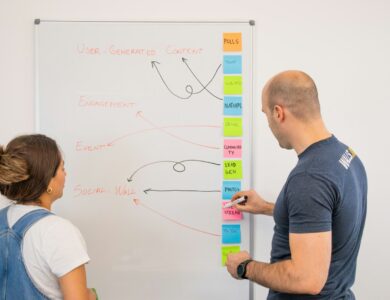
Introduction:
The richness of group learning lies in its diversity—but only if all voices are heard. In many discussions, dominant speakers lead, while quieter learners hesitate or withdraw. Inclusive group discussions ensure that every participant can contribute meaningfully, regardless of personality, language skills, or background.
Why Inclusion Matters:
Inclusive discussions:
- Foster equity and belonging.
- Bring more perspectives into problem-solving.
- Boost engagement and learning for all.
- Build empathy and active listening skills.
Without inclusion, learners may feel alienated, and important insights are lost.
Common Challenges:
- Uneven participation.
- Intimidation by stronger personalities.
- Language barriers.
- Implicit bias or groupthink.
- Lack of structure or facilitation.
Strategies for Facilitating Inclusion:
- Set the Tone Early:
Create ground rules like:
- One voice at a time.
- Respect all contributions.
- Step up, step back (encourage talkative participants to pause, and quiet ones to engage).
- Use Structured Formats:
Avoid open-ended chaos. Try:
- Think-Pair-Share: Everyone reflects individually, then shares with a partner, then the group.
- Round Robin: Each person speaks in turn.
- Small group breakouts with a report-back system.
- Use Visual Prompts or Sentence Starters:
These help hesitant speakers begin:
- “I noticed that…”
- “I agree with X, and I’d add…”
- “I see it differently because…”
- Anonymous Input Tools:
Platforms like Mentimeter, Jamboard, or sticky notes allow for written, private input—ideal for shy learners or controversial topics. - Assign Roles:
Give learners discussion-specific roles like:
- Facilitator
- Timekeeper
- Note-taker
- Equity monitor (ensures fair participation)
- Encourage Language Flexibility:
Allow pauses, paraphrasing, or clarification. Don’t penalize imperfect grammar—focus on ideas.
Addressing Bias and Group Dynamics:
Bias may silence some learners. Train students to spot microaggressions or exclusion and to respond respectfully. Model inclusive behavior and speak up when dynamics become inequitable.
Check in Regularly:
Ask questions like:
- “Whose voice haven’t we heard?”
- “Do you feel comfortable sharing?”
- “What could make this discussion more inclusive?”
Conclusion:
Inclusive group discussions don’t just happen—they’re designed. When every voice is valued and heard, learners feel seen, respected, and empowered. Educators who facilitate inclusively create environments where diversity becomes strength, and participation becomes purpose.




